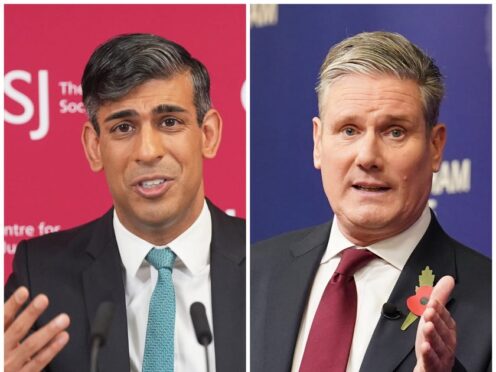This feature of claims from the campaign trail has been compiled by Full Fact, the UK’s largest fact checking charity working to find, expose and counter the harms of bad information, as part of the PA news agency’s Election Check 24.
AI-powered analysis of hundreds of hours of election interviews and discussions on TV, radio and podcasts over the last seven days reveals that tax was mentioned more than three times as often as immigration, family, or health.
This included 62 mentions of high-profile claims which Full Fact has concluded are misleading, yet have dominated discussion across the election.
First, the Conservative Party’s claims that a Labour government would lead to £2,000 tax increase for a working family, an unreliable figure based on a number of assumptions and unclear details of Labour’s plans. It is also a cumulative estimate – so the Conservatives are claiming every working family will pay £2,000 more in taxes over the next four years, rather than annually.
Second, the Labour Party’s claim that a Conservative government would lead to £4,800 increase in mortgage payments, which is a speculative figure that also relies upon uncertain assumptions and seems to describe the additional mortgage cost per year by the end of the parliament, rather than the accumulated cost over the whole parliament.
Chris Morris, chief executive of Full Fact, said: “Instead of the much-trailed ‘AI election’ we’ve actually seen a ‘tax election’ in which AI has been a critical partner helping us to apply meaningful, real-time scrutiny to misleading claims by major parties.
“Up to and beyond July 4, political parties have to recognise that voters deserve better than cynical scare tactics using fudged numbers.”
Full Fact’s AI-powered analysis examined transcripts of election coverage totalling more than eight million words to produce analysis of the key claims. Against the 6,574 mentions of tax, the analysis found 2,712 mentions of schools, 2,401 mentions of health, and 2,096 mentions of economy, and 486 mentions of mortgages.
Misinformation was mentioned just 18 times, despite polling by Ipsos for Full Fact which found that 75% of UK adults expected to have some impact on the result of the election.
As the competing tax claims continue to feature in the campaign, recent polling by Savanta for Full Fact suggests that voters are sceptical of their honesty – two-thirds (67%) of adults and 85% of undecided voters said they felt that political parties’ costings of other parties’ policies were not honest.
